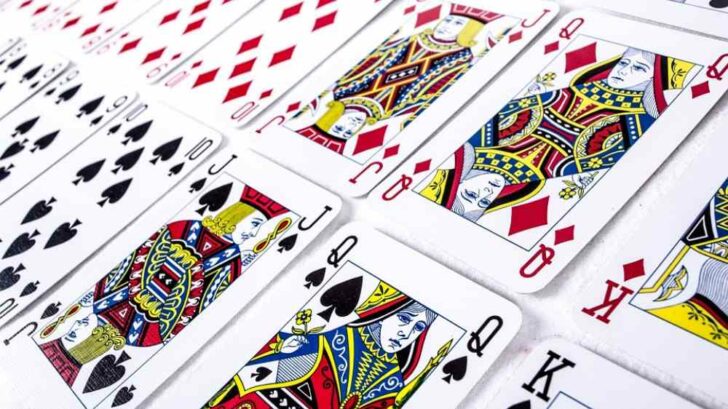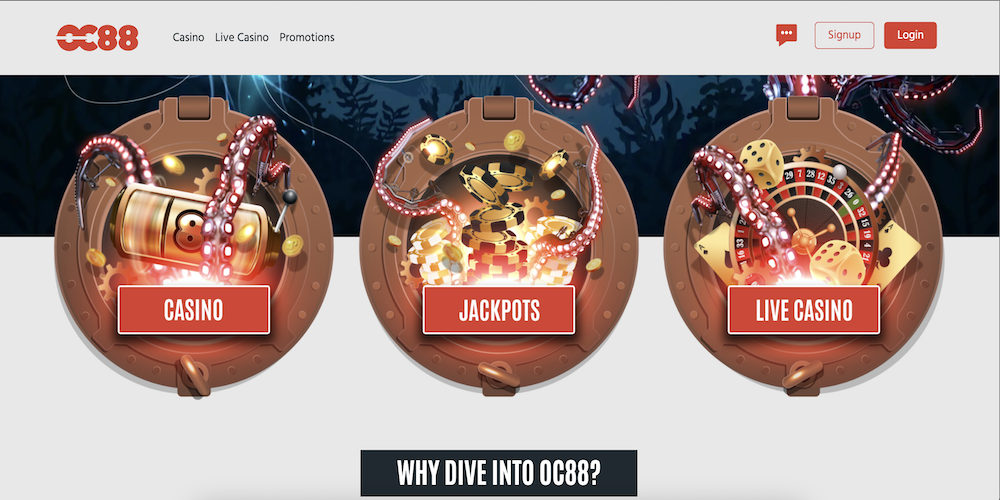Cards and Their Symbols – The Evolution of the Deck of Cards

The Lost Origins of Playing-Card Symbols
Everyone knows and has probably played with a deck of playing cards at some point in their lives. And though every country might try and claim a part in their invention, we really have the Chinese to thank. Of course, the French will now pipe up indignantly and say they were the ones who were responsible for the standardization of Carte à Jouer and its card bearing cousin, tarot. And the British might claim that the very first mention of a card game in literature occurred on English soil.
If we examine the deck of cards, with all their different colours, suits, names and emblems, then we can appreciate that they are, in reality, a marvel of engineering, history and design. From the perspective of their provenance, they are much more than a simple toy. They are a historical-cultural imprint. With that in mind, let’s have a deeper delve into their origins and how history decided on their forms, designs and numbers.
The Origins of Playing Cards
Though historians have been unable to put a pin on the map to mark the exact location cards originated from, the general consensus is that they came from the East. Just like tea, gunpowder and porcelain, China is without a doubt the country of origin. If we examine scrolls from the Tang Dynasty we can see they were playing the game with paper tiles, and though they may look more like dominoes, to our modern eye, it’s generally considered that this is the first record of playing cards. Back in Europe in the 14th century, Knights bought the “Saracen’s Game” back from the Holy Land during the Crusades. This could point to the card’s origins being the Middle East. But the general thinking today is that merchants bought the game back from India, to where they had travelled hundreds of years before thanks to traders travelling from China westwards.
One of the Vices

Once the game arrived in Medieval Europe, it was an instant hit and, as a pastime, was often played whilst drinking and socializing, as players worked out how to win the jackpot. As a result, the playing of cards was seen as a vice. It also drew chancers, cheats and charlatans to play. In fact, the gambling games became so disruptive to many European countries, that many governments banned card games completely. For example, a 1377 ordinance from the French authorities banned all card games on working days. As you can imagine, the Church was behind many of these new laws, as they considered cards to be the “Devil’s Picturebook” which would only lead to a life of depravity.
For the best social gambling time, visit 22Bet Casino. Not only do they have a huge selection of casino card games, but also every new player receives a huge welcome bonus of 122% up to €300!
The Suits From France
We can thank the French for the four suits spades (♠), clubs (♣), hearts (♥), and diamonds (♦). These symbols were referred to as “pips.” As opposed to lavish and fantastic symbols, these pips were easy to copy, given way to many variations across cultures and geography. Their design could also vary considerably, with these pips being illustrated as birds, goblets and even sorcerers. Much like the Tarot deck that preceded them, many of the pip’s meanings were steeped in symbolic meaning. But whereas in Tarot, the pips were divination, in the deck of cards they were simply a diversion. Nevertheless, playing cards possessed much of the iconography that 16th-century society found fascinating, including alchemy, history, mysticism and astronomy.
The Suits Across Countries
It’s been suggested that the four suits are meant to represent the four classes of Medieval society. So the cups and chalices (hearts) were the clergies. Swords (spades) represented either the military or the upper class, coins (diamonds) were the merchant class, and finally, batons (clubs) were the lowly peasants. But one of the problems with this theory is that there’s a huge disparity between the card symbols across countries. For example, in Germany, bells were the pips associated with the German nobility, instead of diamonds. This is because falconry, which was a popular pastime of the wealthy, saw the individual hawks and falcons sporting bells on their jesses.
Contrast this with the use of diamonds to represent the upper class in France. This is due to the diamond-shaped stones used in the chances of churches, along with using diamond-shaped stones to mark the graves of the aristocracy.
Kings and Queens

One point to keep in mind about the evolution of the pips is that there wasn’t any logical planning involved. That’s why you could find anything from acorns, pikes, leaves, roses, coins and clover, as well as any number of other imagery. Oftentimes, the illustration used was simply a reflection of the commissioning nobleman’s taste. What’s interesting is that, though the nature of the pips was in a state of constant flux, the “face” cards have remained pretty much fixed for centuries. Both French and British cards feature the same famous historic kings, David, Caesar, Charles and Alexander the Great. Though the queens have most commonly shown are Judith, Arginine, Rachel and Pallas, they were much more interchangeable.
For example, the Spanish show no queens at all, having them completely replaced by Caballeros. The Germans simply excluded queens altogether. We’re unsure whether this would increase your jackpot winning chances. While the French were later to re-introduce the queen, the British had such reverence for the female monarch, they even introduced a rule that the king and queen were interchangeable if there was actually a sitting queen reigning at the time.
Aces For Taxation
It was in 1765 that the ace came to the fore. This was the year that the government introduced a tax on playing cards. The ace was stamped on a card to prove that the tax had been paid. In fact, the forging of the ace was an offence punishable by death. One interesting curiosity is the king of hearts. Known as the “suicide king,” not only is he the only king without a moustache, but he appears to be stabbing himself in the head. There’s no dramatic story behind this. Card printing was done using printing blocks. When the card maker needed to make a new set, he often copied from other cards or blocks. This inevitably led to mistakes. Just look at the edge of the king of heart’s sword, and you’ll see that it’s disappeared.
Playing Card Investment Potential

Because the cards were both handmade and taxed, they gradually came to be viewed as an investment. The more exquisitely designed, the greater the provenance and collectability. To that end, soon very fancy, highly specialized decks started to appear. This gradually morphed into playing cards serving a different use, that of propaganda and advertising. Also, because of their perceived value, many cards were repurposed as obituary notes, wedding announcements, music scores and entrance tickets.
Printing The Backs
It was said that players like cards with ornate designs, in fact, the opposite was true. Real gamblers saw these overly ornate cards as being a distraction from the gameplay. Up until this point, the backs of the cards were plain. Only in the 19th century did Thomas De La Rue & Company have the idea to print the reverse side of the cards. This was thanks to a new printing method, the lithographic press design. With this new machinery, the printer could offer dots, stripes and stars on the backs of the cards. One of the instant advantages of this was that the backs of the cards no longer appeared a mess of smudges, which would serve to unwittingly “mark” the cards, making them useless for gamblers. Having a uniform pattern on the back of the cards meant there was less room for cheating.
During the American Civil War, the corner indices, both letters and numbers were patented. As you can imagine, this simple yet essential attribute of showing both the suit and the number together was revolutionary. For the first time, players could hold their cards with just the corners showing them their hands. Just a quick glance was enough for the player to know their tally of cards. This would be a game-changer for games like jackpot poker and rummy. If you want to get the best card playing experience online, then head over to 22Bet Casino. They have a huge variety of all your favourite card games, along with many live dealer tables.
Cards and Their Symbols: The Joker

Finally, we should mention the Joker. We can see these as the “wild cards” and they normally depict the court jester. Up until the 1800s, there was no jester or joker. Then in 1867, the joker appeared in the first printed decks produced in the US. Before long, British card producers started including them in their decks. Being such a recent addition to the deck of cards, you’ll find very few jackpot games actually make use of the joker. Also, you’ll notice that there’s no industry-wide design for him. He can be a joker, a seducer, a trickster or a wicked imp. With the playing of cars being such a social experience, whatever he appears as you can be sure that he’s a great representation of having a great time.
As an aside, we recommend that you examine various factors when you buy a deck of cards, as not all cards are the same.
Click here to visit the 22BET Casino to discover a brand new world of online gambling














